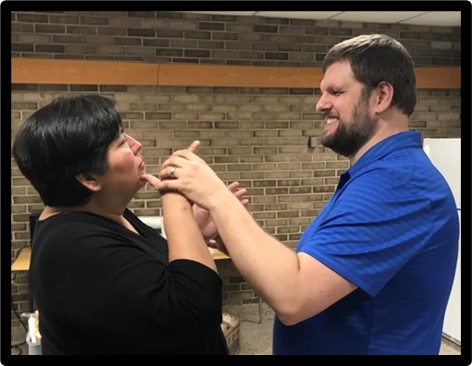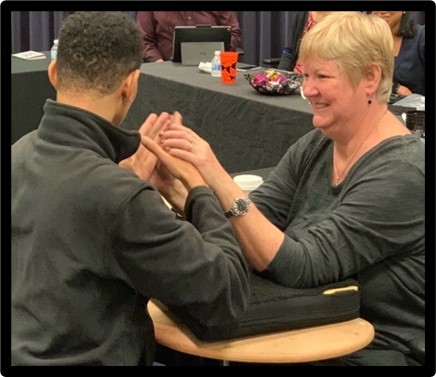

Tactile sign language is a method of receiving sign language by placing one’s hands over the hand of a communication partner to feel shape and movement. The individual may prefer a one- or two-handed approach to tactile signing. Because so much of American Sign Language (ASL) relies on body language, tactile sign language needs to be modified to convey this information. Examples include conveying facial expressions, tone of the message, head movements, shoulder raises, mouth morphemes and movements of the body in sign.
If a person is utilizing a one-hand approach, the signer must take into consideration signs that are not symmetrical. For example, the sign for “garage”. The signer must modify the sign to ensure that the individual has contact with the non-dominant hand. Seating and supports are also vital as tactile sign language can be tolling on the body. A table, pillow and adjustable chairs may be needed.